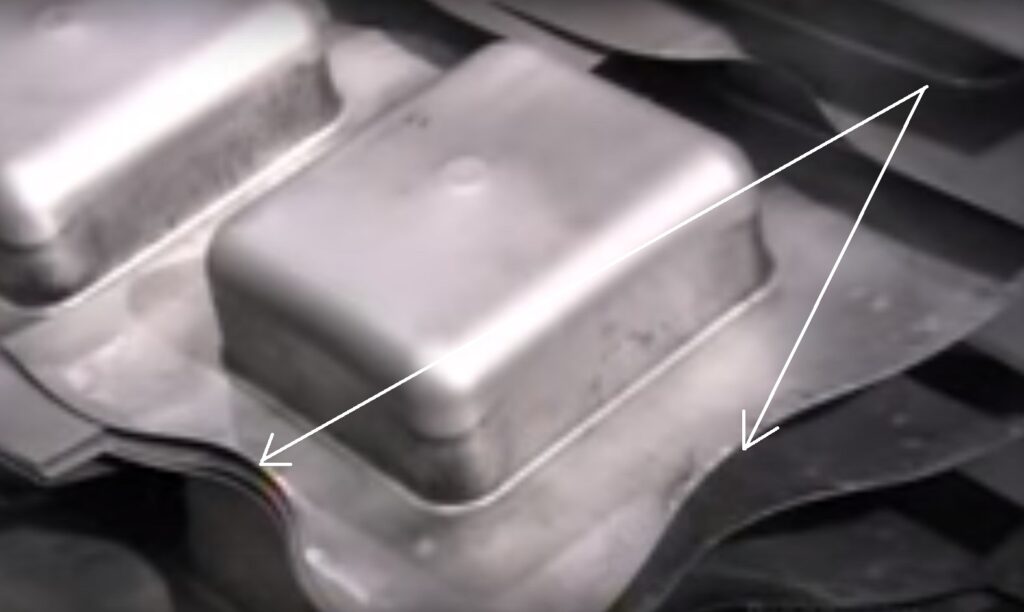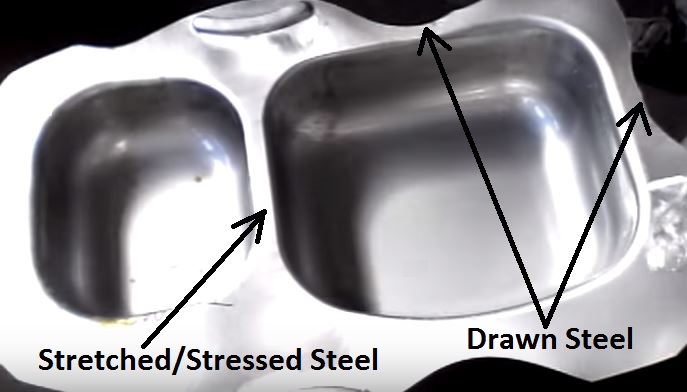A welded sink is a sink where the sink bowls are individually drawn (pressed) then trimmed and welded together. Picture 1 shows a sink that has been drawn from a square piece of stainless steel. You can see where the steel has been drawn in to form the sides of the sink. The Cygnet Stainless factory then trims the steel and weld two individually drawn bowls into a double bowl sink. This process allows all four sides of the bowl to be of equal thickness.

Picture 2 shows a sink where both bowls in a double bowl sink are drawn from a single piece of steel. This process is much cheaper because it is a one-step process instead of four steps. You can see in the picture where the steel is being drawn in on three sides of each bowl. There is no steel available to be drawn into the center rail, so this process requires stretching and stressing the steel in the center rail. This process makes the center rail steel thinner than the rest of the sink. You can hear the difference when you tap on the center rail. That area will sound much tinier than the other sides.

Welded sinks are heavier which means they are quieter than double drawn bowls. The Cygnet factory also uses heavier South Korean 16 gauge stainless steel (1.50-millimeter 16 gauge vs. Chinese 16 gauge at 1.35-millimeter.) Many manufacturers make up for the thinner steel by adding sound pads on the bottom and sides of the sink. Almost always, the more sound pads, the cheaper the sink because the manufacturer is trying to make up for the thinner or cheaper steel. The sound pads are made from recycled rubber and can have a distinctive odor.
Cygnet welded sinks have no side pads, and the bottom pad is a foil back pad from the automotive industry that is used to reduce road noise. Over the foil pad, the factory installs an industry exclusive thermal pad to reduce condensation.